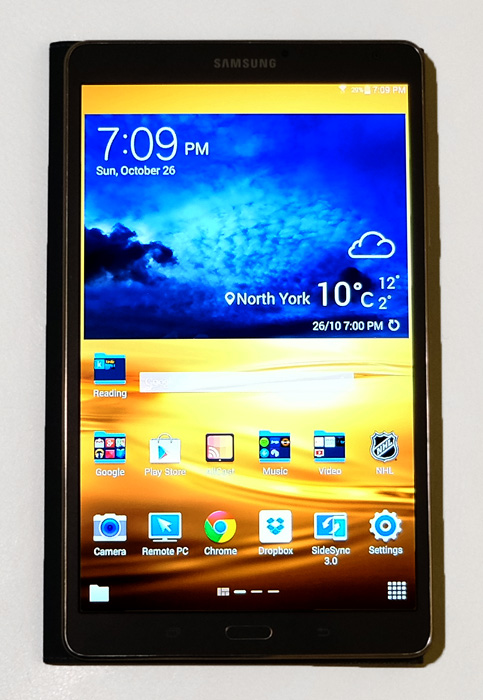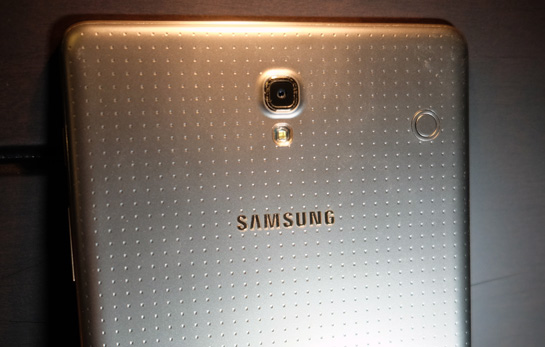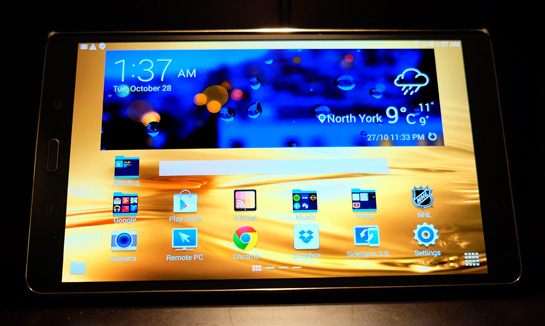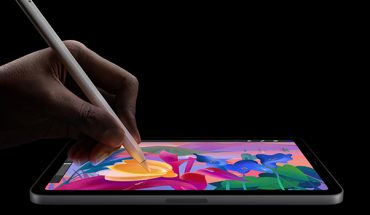 Even the less discerning consumer probably recognizes that Samsung doesn’t seem to be shy in experimenting with its device lineups, and tablets are no exception. The Tab S line, coming in 10.5- and 8.4-inch models, is the most recent and most audacious in its attempt to fight against the dominance of Apple’s iPad. Its ability to compete is made obvious on paper, but it’s the user experience that makes all the difference.
Even the less discerning consumer probably recognizes that Samsung doesn’t seem to be shy in experimenting with its device lineups, and tablets are no exception. The Tab S line, coming in 10.5- and 8.4-inch models, is the most recent and most audacious in its attempt to fight against the dominance of Apple’s iPad. Its ability to compete is made obvious on paper, but it’s the user experience that makes all the difference.
The Tab S is particularly interesting because it marks the first time Samsung has chosen to outfit a tablet with a Super AMOLED display. Even the resolution is higher at 2560 x 1600. Sharp, vibrant and very bright when it needs to be, it’s nice to see Samsung exercise some restraint by not oversaturating colour balance and tonality, as has been the case with previous smartphones sporting Super AMOLEDs. The beauty of it is that blacks are deep because those pixels emit no light. Watching a movie or TV show with dark scenes really bears this out. Whites, which tended to lean toward blue tinges in the past, are more natural here, even if it doesn’t always necessarily feel that way.
And indeed, the screen is the centrepiece of a tablet that is every bit a part of the Samsung family as any other recent mobile device coming off the company’s assembly lines. It uses the same interface and TouchWiz user interface as the Galaxy S5 and Galaxy Note 4 (albeit with some slight differences). The Adaptive Display feature, turned on by default, not only adjusts brightness based on the surrounding light, but also calibrates tint and other settings to optimize whatever you’re doing. Watching a video may bring different results than browsing the Web or swiping through a photo album. This was meant to be a feature that developers latched onto, except it hasn’t happened yet. Because Adaptive Display only works with Samsung’s own native apps, the experience can’t be replicated on a third-party app until its developer makes it so.
The physical look and feel is akin to an S5 that has been blown up into a bigger version of itself. The perforated dimples in the back line up as ornaments on a back that gives the illusion of a premium garment from a distance, but feels every bit like the faux plastic leather it truly is up close.

Despite the lack of what could be considered high-end build materials, the Tab S doesn’t feel or come off as a cheap product. It doesn’t have the elegance or refinement that the iPad Air 2 or iPad Mini 3 do, but it’s by no means pedestrian in comparison. It’s just that Samsung is also competing on price by charging the same as Apple does for a 16GB model. Samsung went for broke with a 1.9GHz octa-core processor and 3GB of RAM, but had it really wanted to make things interesting, a 32GB model for $520 (instead of a 16GB) would have been one way to go about it.
We see it that way, in part, because Samsung is keen on creating a viable and lasting ecosystem of products that support each other, much like Apple has been successful in doing. Quick Connect and SideSync are two features that foreshadow much of this approach. Quick Connect is meant to simplify transferring files to and from devices that the Tab S can see, especially other Galaxy phones and tablets. SideSync 3.0 is a direct hand-off, wherein a call coming in to a Galaxy S5 or Note 4 can be answered on the Tab S instead. This proved very convenient in cases where the phone might be charging in another room of the home, though it can also work over LTE and 3G.
Other features like Remote PC, which is excellent when it works fluidly, adds to this vision of playing nice with other products. Of course, the limits of the walled garden are more apparent when there aren’t as many third-parties trying to get in. While Apple has earned praise for finally expanding its AirDrop feature to include Macs and iOS devices, there are still limitations centering around Bluetooth 4.0 compatibility that shuts some of them out. Samsung, to its credit, has opened the parameters wider but has work to do to improve what the actual experience is like. We encountered dropouts, lost connections and other issues when transferring files. They weren’t terribly common, yet were consistent enough to warrant some concern.

Beyond that, some of the Tab S’s features have little to do with a wider network. Multi-Window is a useful and productive way to go back and forth between up to four different apps. Admittedly, the bar has been set pretty low when it comes to tablet multitasking, but we feel that this is among the best available on any platform.
The Magazine UX interface that is always available one right swipe away from the home screen is essentially exactly the same as it is in other Samsung mobile devices. Visually, it’s like a static Multi-Window experience.
We won’t say much about the rear 8-megapixel camera because it isn’t really exceptional. It’s decent for a tablet, though we rarely take photos with tablets, so it’s not a real strike against the Tab S for us.
Battery life is actually quite good for something with this much power under the hood, including the demanding AMOLED display. We were able to go a couple of days with regular usage before feeling the need to recharage.
All of the things that make the Tab S what it is are generally useful, but outside of the high-res display, it’s hard to see this tablet line rolling off consumers’ tongues like the words “Galaxy” and “Note” do. The lack of a 32GB option is also disappointing, not least of which because 16GB simply isn’t enough for a lot of users. Sure, there’s a microSD slot to expand on that, but Google developed Android 4.4 KitKat to not allow copying data directly to the card — a hindrance when internal storage is nothing more than scraps of megabytes.
At $420 for the 8.4-inch and $520 for the 10.5-inch, both are priced to be both elite and competitive. They achieve the goal of being both, largely on the impact of the high-res AMOLED, but you would have to see it for yourself if you think it’s enough to justify the cost of admission.


